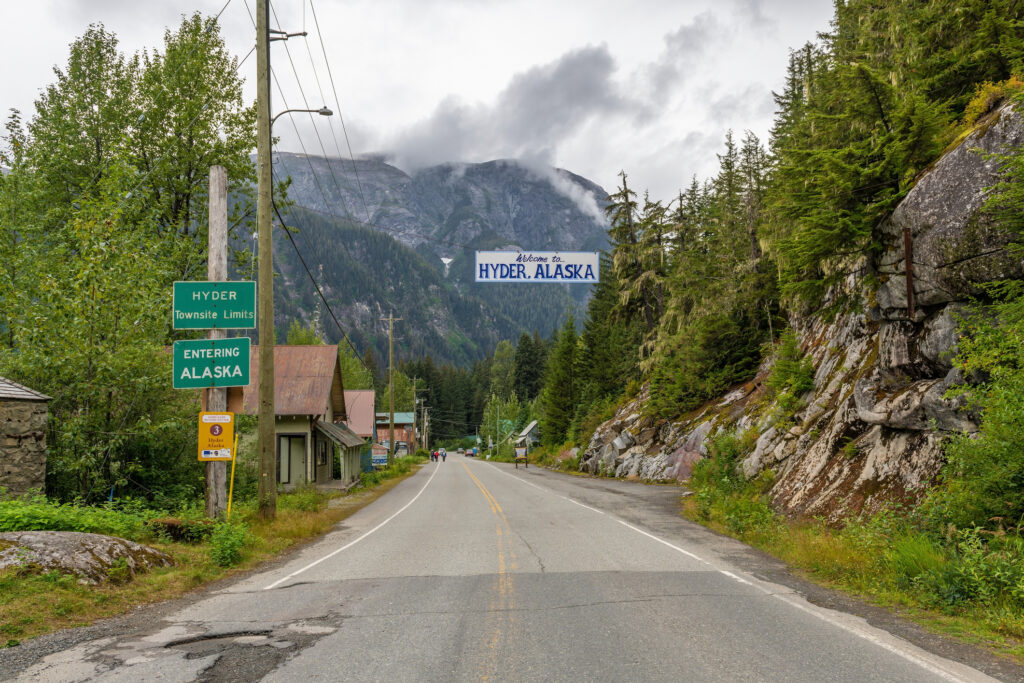The road into Hyder, Alaska, from Stewart, British Columbia, is seen in this undated photo. Hyder has been linked to the rest of Alaska by a ferry in the past. (Photo by SL_Photography/Getty Images Plus)
To follow-up on my recent commentary that Ketchikan and southern Southeast Alaska should have a ferry to the mainland via Hyder, Alaska, I am reporting on our recent ferry trip without the benefit of having a ferry port in either Prince Rupert, British Columbia, or Hyder.
My husband and I routinely traveled to and from British Columbia five or six times per year for 25 years — 125-plus round trips — using the Prince Rupert port. Our destinations have been Smithers and Terrace, in north central British Columbia.
We recently made another, perhaps final, trip to Smithers. We got on the ferry in Ketchikan, heading north to Skagway. From Skagway we got off the ferry and headed into the Yukon to cross the border into British Columbia. From the border we drove to Smithers over a 2 ½-day trip. Upon leaving Smithers a week later, we drove to Bellingham to catch the ferry to Ketchikan, rather than returning to Skagway, because the ferry going south from Skagway was fully booked for 3 weeks, while the ferry from Bellingham to Ketchikan had room and was departing in only 5 days. We drove to Bellingham in 2 ½ days and caught the ferry in Bellingham.
In all, we drove 825 miles from Skagway to Smithers and 750 miles from Smithers to Bellingham: 1575 total. We also traveled 185 miles by sea over 24 hours to get to Skagway and 750 miles by sea over 42 hours to return to Ketchikan from Bellingham, for 935 sea miles total.
The cost of the voyage to Skagway was $895 and the return fare from Bellingham was $1,920 — $2,795 total. So, you ask, what is the point here? It is that this takes too much time and money for most Southeast Alaskans and unfairly leaves us without road access.
By contrast, had we been able to get to British Columbia from Hyder, we would have spent approximately nine hours by sea coming and going, 18 hours total; four hours driving each way, eight hours total, and an estimate of $400 ferry fares coming and going, or $800 total. This points to the solution: a landing in Hyder, Alaska.
Prince Rupert is no longer feasible, as it would require repair of the ramp using Canadian steel, not U.S. steel, would require our border guards be unarmed, and mandate that our ships and crew be equipped and trained under the requirements of the Convention for the Safety of Life at Sea. None of these things would be required for a port in Hyder, which Alaska would own 100%. In addition, federal money is available and specifically earmarked for rural ferry service.
Those who agree with Hyder as a solution can speak up, loudly and repeatedly. If we do nothing, we can expect nothing. If we are going to have access to the mainland that is available, affordable and convenient for Southeast Alaska, our elected leaders would have to make it happen. Yes, we do need and want a ferry to Hyder!
GET THE MORNING HEADLINES.

